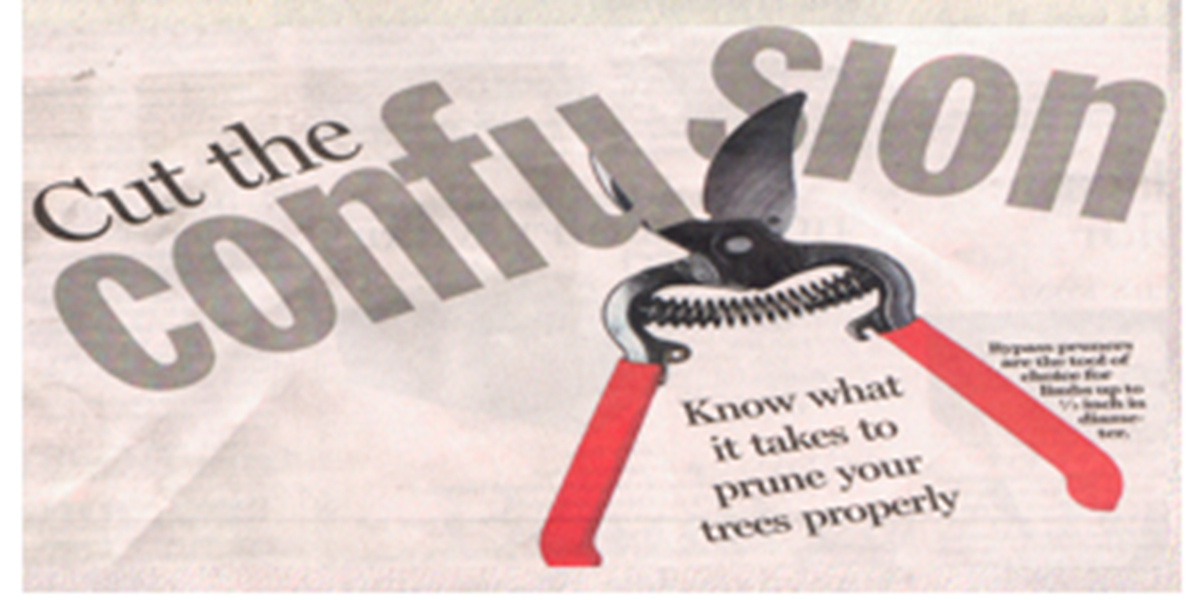

Published November 2, 2001 By JEANNETTE S. KETON and All Photographs By EVANS CAGLAGE/DMN Staff Photographer
If your house were a picture, the trees surrounding it would be the frame. Overgrown trees can ruin the look; well-pruned ones can enhance it - as well as your property values.
But before you set out with a saw or hire someone to trim your trees, understand that pruning is both an art and a science. Make sure you know what you are doing or the results could be disastrous. Poorly executed pruning jobs can ruin your home's overall ambience, decrease property values, and, in some instances, seriously damage or shorten the life of your trees.
There's no doubt trees add value to property, particularly in shade starved Texas. Arborists and real estate agents say the figure ranges from 10 percent to 20 percent of total property value. But experts say the benefits of trees far exceed dollars and cents. Scientific studies show a correlation between trees and improved air quality, cooler average temperatures, faster recovery rates for surgical patients, and even lower crime rates in public housing projects.
Studies have also resulted in fine-tuning the pruning process to maximize benefits and minimize injury to trees. Proper pruning invigorates trees; careless pruning degrades tree health. Pruning is especially critical for young trees as it defines future growth patterns. Improper pruning of young trees can weaken tree structure.
Arborists say overpruning is the most common problem. Certified arborist Steve Houser, owner of Arborilogical Services, a tree-care company based in Wylie, estimates that 70 percent of trees are overpruned. The results? Poor tree health, weakened structural integrity, and decreased aesthetic value, Mr. Houser says. Overpruning also causes excessive sprouting in the interior of the tree, necessitating more frequent pruning and unnecessarily high tree-maintenance costs. In some instances, it can shorten a tree's life span.
How so? A tree's foliage produces food the plant needs to continue growing, Mr. Houser explains. Removing too many limbs at a time significantly reduces the tree's ability to produce food, making it more susceptible to diseases and insect infestation, and in some instances, slowing growth.
Improper pruning can also result in a tree's gradual demise. Twenty years ago, experts recommended pruning limbs flush to tree trunks and bigger limbs. Arborists today know to make angled cuts that leave a portion of each limb called the branch collar, says Sarah Bjornson, a tree program director of the Dallas Trees and Parks Foundation, a nonprofit tree-planting organization. The branch collar contains cells that encourage rapid cell growth. By leaving the collar, wounds caused by cuts will heal symmetrically and more quickly. Improper cuts that injure these critical cells leave open wounds that are susceptible to insects and disease.
Identifying the collar can be challenging. When in doubt, Ms. Bjornson and other arborists advise, don't prune.
Do the Three-Step
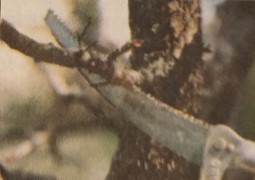
Use a three-cut pruning process to help wounds heal faster and to prevent damage to the tree. First, make an undercut, about a foot away from the branch collar.
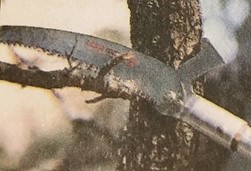
Next, space the top cut several inches from the first cut, but in the direction toward the branch's tip. Cut all the way through; this will remove most of the branch.
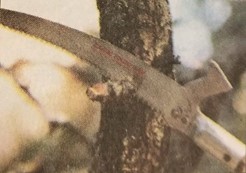
Finally, cut the remaining stub at the branch collar, the swollen area of the branch where it joins with the trunk (this will leave a "collar" that may be several inches long on a mature tree). Never cut flush with the trunk.
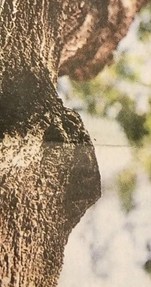
The branch collar, the swollen area extending from the trunk, should remain after pruning. It contains cells that help heal wounds.
What Constitutes Overpruning?
A good pruning job is like a good haircut, Mr. Houser says. "It shouldn't look as if it has been cut." Certain types of trees require different pruning techniques to maximize growth and tree health. Do-it-yourselfers should take some classes to understand the nuances, he advises. Some general guidelines:
- Never top a tree, including crepe myrtles. Topping allows very little food to be stored for future growth. And limbs that sprout from topped trees are generally weaker.
- Never remove more than 20 percent to 25 percent of a tree's foliage at any one time. If 25 percent is removed, the tree should be pruned for another two to three years.
- When removing lower branches, don't prune too much. The trunk should never exceed 1/3 of the tree's overall height. Violating this guideline increases a tree's susceptibility to wind damage. Exceptions may vary with city requirements and fruit trees.
- Prune weaker branch angles that are extremely low or "V" shaped as opposed to stronger "U" shaped limbs. Ideally, branch angles should intersect at 90 degrees.
- Never prune a limb that is larger than 1/2 the size of the tree's trunk. "Wait a year or two until the trunk gets bigger," Ms. Bjornson advises. "People copy what they see - even if it is wrong. I think that's why everyone tops their crepe myrtles - they see landscaping crews do it. Determine what is the right thing to do for the health of the tree."
- And finally, but perhaps most important, make cuts correctly using the three-step process described in the photo series.

A razortooth saw is the best pruning tool for limbs 1/2 to 3 inches in diameter. Corona saw and pruners available at Home Depot and Elliott's Hardware.
So how do you know if your trees need to be pruned?
A common, but rarely valid reason form a tree health standpoint, is so that grass can grow.
Alan Johnson, a certified arborist and project manager of Holcomb Tree Service in Garland, spends a lot of time trying to talk customers out of saving their grass at the expense of trees.
"It takes years to grow an 8-inch limb," Mr. Johnson explains. "It's easier and faster to grow a different kind of grass that is shade-tolerant."
Good reasons for pruning vary according to the type of plant. Fruit and nut trees need to be pruned regularly depending upon their bearing habits to ensure their branches don't break during peak season and to provide optimal fruit production. New trees need pruning to ensure proper growth. And larger shade and ornamental trees need pruning to enhance their landscapes, prevent decay from spreading, encourage growth via thinning, and ensure the safety of your home.
Contrary to popular belief, newly transplanted young or middle-aged trees do not need heavy pruning. Proper pruning is the issue. Leave as much foliage as possible - essential to produce food for regeneration of the roots. Prune "V" shaped forks and limbs that rub or cross.

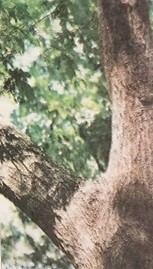
Left: Close V-shaped branches indicate a weak structure that is vulnerable to storm damage. Right: This U-shaped branching structure, however, is strong.
With little study, many homeowners can safely and confidently prune newly planted, young trees, arborists say. A hand pruner can be used for cuts up to 1/2 inch in diameter. Limbs between 1/2 and 3 inches in diameter should be cut with a handsaw.
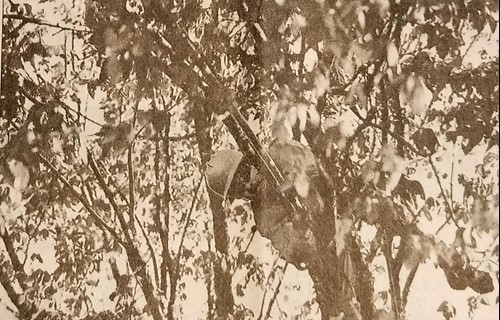
Safety first: If you'll have to leave the ground in order to prune a tree, call a professional.
Sealing all cuts is no longer considered essential. Only live and red oaks that are pruned during oak-wilt season (February through late June) need to be addressed. Mr. Houser recommends a light aerosol sealant such as orange shellac or Lac Balsam.
Middle-aged and mature trees pose more of a challenge for do-it-yourselfers. Chain saws are the recommended tool for cuts larger than 3 inches in diameter. Making accurate cuts while safely handling the saw and balancing at high altitudes requires expertise.
"We advise that if a tree is over 3 inches in diameter or you have to get off the ground, hire a professional," says Ms. Bjornson. "With the three-cut process, if you don't do it right and you are standing on a ladder, it could swing around and hit you."
